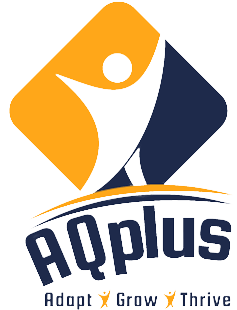In a world where robots and automation are threatening everything from jobs to disrupting household chores, the kneejerk workforce reaction seems to be a focus on people-oriented. But really, what does people-oriented mean, especially in business?
If you’re launching your own venture or already running one, grasping this concept is crucial. It’s not merely about being friendly; it’s a strategic, impactful approach that could significantly sway your business’s path.
Being people-oriented means prioritizing human connections over mere transactions. It’s about valuing employees and customers not as numbers, but as individuals with unique needs and aspirations. This mindset can be the difference between a thriving business and one that merely exists.
So, let’s unpack the true essence of being people-oriented and how it can revolutionize your approach to business.
Building Trust Through Empathy and Understanding
At the heart of people-oriented leadership lies the profound ability to empathize and understand your team members. This means not only seeing things from their perspective but also being deeply attuned to their emotional and professional needs.
It’s about recognizing their individual struggles, aspirations, and motivations. A leader who exhibits genuine concern and understanding goes beyond mere management. They build a foundation of trust and loyalty, which is invaluable in any team dynamic.
This trust fosters an open and honest work environment where team members feel secure in expressing their thoughts and concerns. Moreover, it encourages them to be more invested in their roles, knowing that their leader genuinely cares about their well-being and professional growth.
Such leadership nurtures a culture where each member feels valued, understood, and part of a cohesive team.
Fostering a Collaborative Environment
People-oriented leaders prioritize creating an environment where collaboration and teamwork are not just encouraged but celebrated. They recognize that the best ideas often emerge from collective brainstorming. This is where diverse perspectives are valued and open communication is the norm.
By promoting a culture of collaboration, leaders can effectively harness the diverse skills and viewpoints of their team. This not only leads to innovative solutions but also fosters a more dynamic and engaging work environment.
Such a collaborative atmosphere encourages team members to contribute their best ideas and work together towards common goals. It also helps in breaking down silos and building a sense of camaraderie and mutual respect among team members. In essence, a collaborative environment under people-oriented leadership becomes a breeding ground for:
- Creativity
- Innovation
- Collective success
Encouraging Growth and Development
A fundamental aspect of people-oriented leadership is the focus on the growth and development of team members. This means recognizing their current strengths and also identifying potential areas for development.
Providing opportunities for skill enhancement, professional training, and career advancement are vital. Leaders should encourage their team to take on new challenges and step out of their comfort zones. This will foster a culture of continuous learning and improvement.
When employees perceive that their personal and professional growth is a priority, their engagement and motivation levels soar. This should benefit their individual career paths. But it also contributes significantly to the organization’s overall success and innovation.
Such an approach ensures that the team meets and likely exceeds expectations. This is because they are equipped, encouraged, and motivated to bring their best selves to work.
Leading with Flexibility and Adaptability
In the fast-paced and ever-changing business landscape of today, flexibility and adaptability are key traits for effective leadership. People-oriented leaders are characterized by their openness to new ideas. They tend to have more willingness to adjust strategies in response to their team’s feedback and changing market dynamics.
This flexibility allows for a more resilient team, capable of navigating challenges and seizing opportunities as they arise. Additionally, it demonstrates that the leader values and respects their team’s insights. The end result can be an environment where innovation is encouraged, and change is embraced.
This adaptability is crucial in responding to external changes. Yet it is also important when addressing the evolving needs and aspirations of the team. By being flexible and adaptable, leaders can ensure that their strategies and approaches remain relevant and effective.
Comparing Leadership Approaches with a People-Oriented Lens
Leadership styles vary widely, each with its merits and challenges. However, integrating people-oriented aspects into these styles can often enhance their effectiveness.
Let’s explore how different leadership approaches compare to a people-oriented style and how infusing elements of people-focused leadership can benefit each.
Task-Oriented Leadership vs. People-Oriented Leadership
Task-oriented leadership focuses primarily on the completion of tasks and meeting objectives. While this approach ensures efficiency and goal attainment, it can sometimes overlook the team’s morale and individual needs.
When you incorporate people-oriented aspects, such as acknowledging team efforts and addressing personal development, leaders can create a more balanced approach. This integration leads to a workforce that is not only efficient but also motivated and committed.
Authoritative Leadership and People Focus
Authoritative leaders make decisions independently and expect the team to follow without much input. This style can lead to quick decision-making and clear direction. However, it may also result in a lack of team engagement and creativity.
By adopting a people-oriented perspective, authoritative leaders can encourage more team input. They can also develop a sense of ownership among team members. This can enhance team satisfaction and lead to more innovative outcomes.
Democratic Leadership Enhanced by People Orientation
Democratic leadership involves team members in decision-making processes, fostering a sense of involvement and ownership. However, this approach can sometimes slow down decision-making.
When leaders apply a people-oriented focus, they can ensure that while collaborative decision-making is valued, team members’ individual needs and strengths are also prioritized. This can lead to a more dynamic and responsive decision-making process.
Laissez-Faire Leadership with a People-Oriented Twist
Laissez-faire leadership offers high levels of autonomy to team members. This often leads to high creativity and innovation.
However, this style can sometimes result in a lack of direction and accountability. So, by adding elements of people-oriented leadership, such as regular check-ins and support, leaders can provide necessary guidance and feedback. This may enhance the effectiveness of this autonomous approach.
Transformational Leadership and the People Element
Transformational leadership is about inspiring and motivating team members to exceed their expectations. This style is inherently people-focused. Yet, emphasizing the individual development and well-being of team members can further enhance its impact.
By ensuring that the transformation also includes personal growth and job satisfaction, a leader can cultivate a more engaged and committed team.
Servant Leadership: A Natural Ally of People-Oriented Leadership
Servant leadership prioritizes the needs of the team and serves them first. This style naturally aligns with people-oriented leadership.
The reasoning behind this is both focus on the well-being and development of team members. The idea here is to continually emphasize these aspects together. Then servant leaders can ensure a supportive, empowering, and collaborative work environment.
Nurturing Creativity Through People-Oriented Management
Embracing people-oriented management in leadership paves the way for a surge in creativity and innovation within teams. Leaders who prioritize understanding and valuing their team members’ unique perspectives and skills set the stage for an environment where new ideas flourish.
This mindset shifts the focus from merely achieving targets. Instead, it’s about cultivating a rich soil where creativity can grow organically, showcasing a key entrepreneur skill.
Leaders adept in people-oriented strategies and equipped with strong leadership skills are masters at unlocking potential. They recognize that breakthroughs often come from the freedom to experiment and the safety to fail.
When a leader offers support and encouragement, they enable team members to push boundaries and explore new territories without the fear of repercussions. This approach can accelerate personal growth. It also can propel the team toward innovative solutions that can revolutionize managing your business.
Emphasizing Individual Strengths
Leaders who focus on each person’s strengths make teams more excited and involved. When folks work on things they love, their work shines and makes the office a better place. This match-up of what people like with their work keeps creativity flowing all the time. It shows just how key entrepreneur skills are.
Using a people-first approach in leading helps bring in lots of different ideas. Leaders who value different views and backgrounds know that new ideas pop up from diversity.
This welcoming attitude boosts the team’s creativity and makes everyone feel part of a tight-knit family. Every person feels important and listened to.
At its core, leading with a focus on people turns an office into a creative powerhouse. It’s all about making a place where everyone feels free to think differently, share big ideas, and help build a culture that loves new thinking and growing together.
Building a Supportive Environment
Creating a supportive environment is key for leaders. This approach makes team members feel secure and valued. When people know they have support, they’re more willing to take risks and innovate.
This safety net is crucial for pushing boundaries and achieving great things. It’s a basic yet powerful aspect of managing a business.
Leaders who provide this kind of support see real benefits. Team members are not just happier; they’re also more productive and creative.
They’re willing to explore new ideas and solutions, knowing they have the backing they need. This confidence can lead to breakthroughs and significant progress for the business. It’s a clear example of effective leadership in action.
Encouraging Open Communication
Open communication is another pillar of a thriving workplace. Leaders who encourage their teams to speak freely create an atmosphere of trust.
This openness leads to better problem-solving and innovation. When everyone feels they can share their thoughts without fear, the whole team gets stronger.
This approach not only solves issues faster but also fosters a culture of continuous improvement. Team members feel involved and important, which boosts morale and loyalty.
They know their opinions matter, making them more engaged and committed to the team’s success. Such engagement is crucial for fostering an environment where entrepreneurial skills can flourish and drive the business forward.
Real-World Scenarios of Open Communication in Leadership
Open communication is a cornerstone of effective leadership, creating an environment where ideas flow freely and innovation thrives. Through fostering a culture of transparency and dialogue, leaders can unlock the full potential of their teams.
Below, we explore several scenarios where open communication has been pivotal, illustrating its impact in practical settings.
Weekly Brainstorming Sessions
In a tech startup, the CEO initiates weekly brainstorming sessions where every team member, regardless of rank, is encouraged to share ideas and feedback. These sessions become a breeding ground for innovative solutions, where a suggestion from a junior developer leads to the creation of a flagship product feature.
This scenario showcases how open communication can democratize idea generation and foster a culture of inclusion and innovation.
Cross-Departmental Meetings
A manufacturing company faces logistical challenges that impact production efficiency. The leadership organizes cross-departmental meetings where employees from production, logistics, and sales come together to discuss the issues openly.
Through these discussions, a frontline worker suggests a simple yet effective change in the inventory process, significantly improving production timelines. This example highlights the value of open communication in solving complex problems through diverse perspectives.
Transparent Decision-Making Process
A nonprofit organization is contemplating expanding its services. The leadership decides to involve the entire team in the decision-making process, sharing detailed plans, potential impacts, and seeking input from all levels.
This transparent approach not only ensures that the final decision is well-informed but also builds a strong sense of ownership and alignment among the team members. It exemplifies how open communication can enhance decision-making and foster organizational cohesion.
Handling Crisis Situations
During a crisis, a retail company’s leadership communicates openly with its employees about the challenges faced and potential strategies to overcome them.
Regular updates, open forums for questions, and transparent discussions about job security and business health help maintain trust and morale. This scenario demonstrates the importance of open communication in navigating uncertainty and maintaining team unity and motivation.
The What Does People-Oriented Mean Question Answered
So what does people-oriented mean for leadership? It means valuing human connections and promoting open communication. Leaders who embrace this approach create environments where innovation and teamwork thrive.
At AQPlus, we succeed in developing people-orientated leadership in businesses, making them thrive. We are unique in that our founder, Ira Wolfe, injects charisma and confidence into your enterprise.
Want to learn more? Contact us here!







